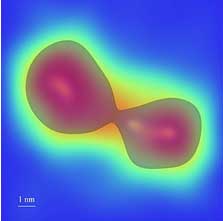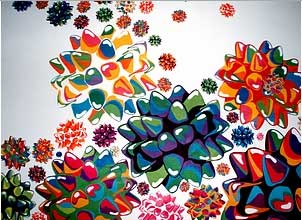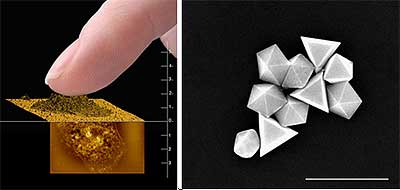Apr 24 2007
Nanotechnology Victoria will announce the winners of its inaugural prizes for Art in Nanotechnology during the 5th World Conference of Science Journalists on Thursday 19th April at 10:20 am. The prizes were established to recognise the interdependencies between art and new technology in imaging new technologies, providing scientific clarity and providing creative inspiration.
Nanotechnology Victoria (“NanoVic”) has offered two prizes: one for scientists displaying real phenomena in a creative way; and one for non-scientists providing creative interpretations of the technology. The number and quality of entries was very pleasing with the winners providing works which will encourage discussion and interest into nanotechnologies.
The Prize for Scientists was awarded for an actual image of nanotechnology phenomena taken from research, development or commercial activities. The winner of the $2000 Science Prize was Peter Liddicoat of the University of Sydney for his work titled ‘Fluidic Evolution of Nano-Particles’. The image was obtained through Atom Probe Tomography (APT) which enables the decomposition of a specimen atom by atom followed by its digital recreation. Peter’s APT image is of an aerospace aluminium alloy in concentration mode.

Judge Peter Handsaker, of the Victorian Office of the Innovation Economy Advisory Board, commented that “the scale of the work was clearly at the nanometre, but in addition it illustrates the fluidity that exists between the solid and liquid state at this size – where solids can be liquid, and liquids solid. The difference in properties evident at the nanoscale, and does it in an intriguing and challenging way”.
The Prize for Artists was awarded to artwork building on nanotechnology themes, not necessarily generated as the result of scientific work in nanotechnologies but drawing on a theme related to nanotechnologies as its inspiration and/or final representation. The winner of the $2000 Artist Prize was Michelle Czech of RMIT University for ‘Magnetic Field’ a hand-made transfer printing on canvas depicting brightly coloured ‘flowers’ inspired by magnetic ferro-fluids.

The Prize for Artists was awarded to artwork building on nanotechnology themes, not necessarily generated as the result of scientific work in nanotechnologies but drawing on a theme related to nanotechnologies as its inspiration and/or final representation. The winner of the $2000 Artist Prize was Michelle Czech of RMIT University for ‘Magnetic Field’ a hand-made transfer printing on canvas depicting brightly coloured ‘flowers’ inspired by magnetic ferro-fluids.
Judge Linda Lucas of Arts Victoria said “the work is playful and joyous and speaks to the potential of nanotechnology”. The work is a very clever and effective interpretation of the behaviour of ferro-fluids and is likely to engage the public in further discussion about nanoscience and nanotechnologies.
In addition to the main Prizes, NanoVic CEO Dr Peter Binks also elected to reward other outstanding entries. Honourable mentions worth $500 each were awarded to Dr Paul Thomas of Curtin University for his work on Project Midas showing a finger as the instrument in an Atomic Force Microscope and to Carolina Novo and Ann Gooding of the University of Melbourne for ‘Gold”, a scanning electron microscopy image of chemically synthesized gold nanoparticles of different sizes and shapes.
